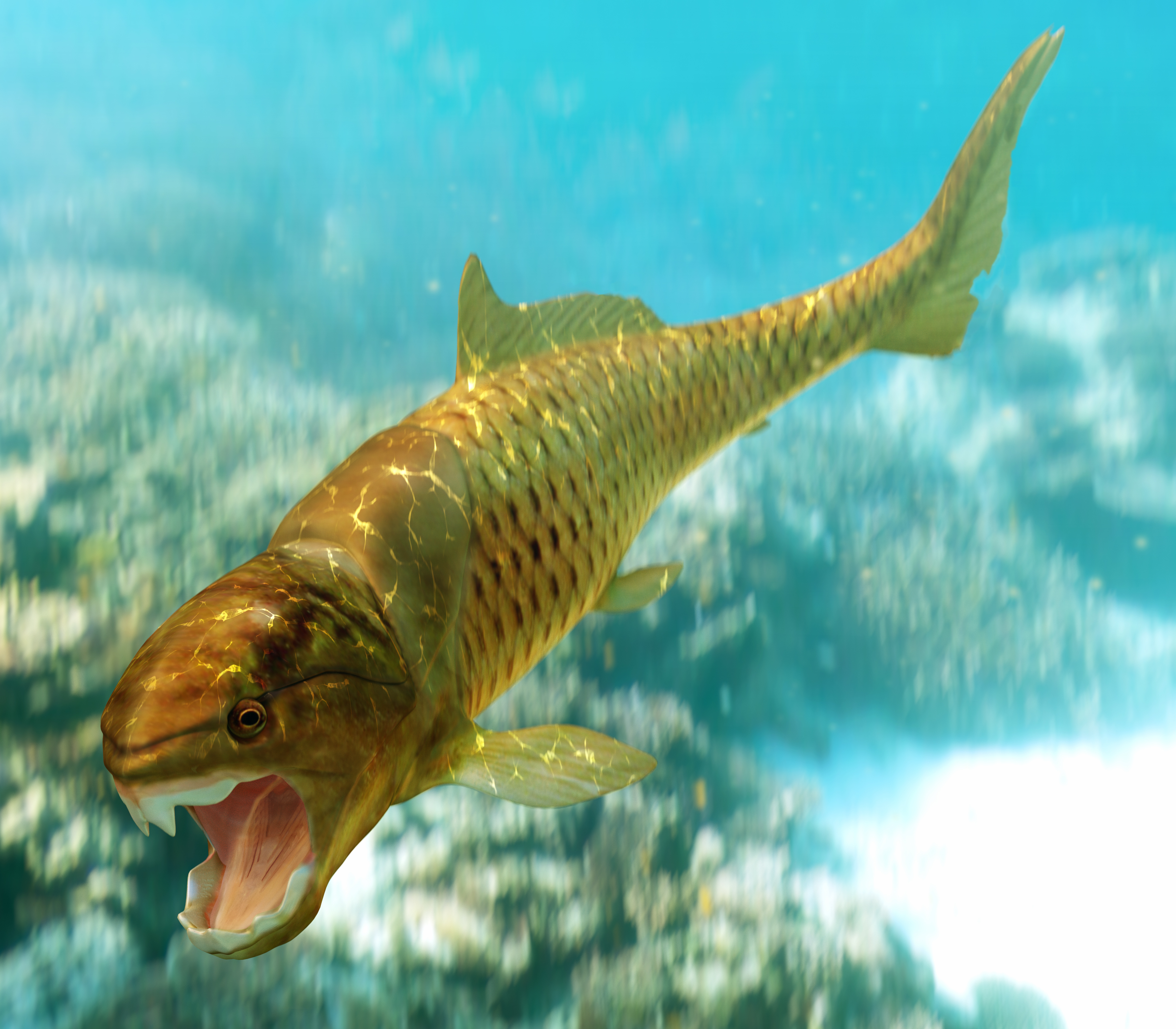Dunkleosteus << DUHNK uhl AHS tee uhs >> was a fearsome-looking prehistoric fish that lived during the late Devonian Period around 364 million years ago. Paleontologists believe Dunkleosteus was the largest and heaviest predator on Earth at the time. Researchers estimate that Dunkleosteus ranged in size from 15 feet (4.5 meters) to as many as 30 feet (9 meters) in length. Paleontologists have also determined that Dunkleosteus had one of the most powerful bites of any prehistoric animal.

Paleontologists classify Dunkleosteus as a kind of placoderm, or plate-skinned fish. These early fish lacked teeth and had a thick armor of bony plates covering the head, eyes, and front part of the body. Scientists believe the armor was covered with a tough skin. The jaws of Dunkleosteus ended in sharp, bladelike plates that were similar in structure and function to teeth. The edges of the upper and lower jaw would grind against each other, keeping the plates sharp.
Dunkleosteus was an apex predator—that is, a predator at the top of the food chain that is not preyed upon by any other animal. The armored head and jaws helped protect Dunkleosteus from the sharp teeth and spiked fins of the prehistoric sharks it preyed upon. Paleontologists have found rare fossils of Dunkleosteus egg cases, similar to those that modern sharks lay. Based on this evidence, paleontologists now believe Dunkleosteus was a distant relative of sharks.
Fossils of Dunkleosteus are known from sites in the eastern and central United States. They are especially common in Ohio, in the region around Cleveland. Dunkleosteus fossils are also found in Iran and North Africa. During the Devonian Period, much of Earth’s land mass formed two large continents. What is now Africa lay along the east coast of North America. A narrow ocean near the equator separated the two land masses. Dunkleosteus inhabited the shallow parts of this global ocean with other Devonian animals, such as early sharks and trilobites. Smaller relatives of Dunkleosteus have been found in Scotland, in other parts of Europe, and in Australia. By the end of the Devonian Period, Dunkleosteus and all other placoderms had become extinct.
Fossils of Dunkleosteus were first discovered and described in 1873, but they were initially classified as another kind of placoderm. Canadian-born paleontologist David Dunkle studied and described many fossils of this fish while he worked at the Cleveland Museum of Natural History and the Smithsonian Institution in Washington, D.C. The prehistoric predator was renamed Dunkleosteus in his honor in 1956.
